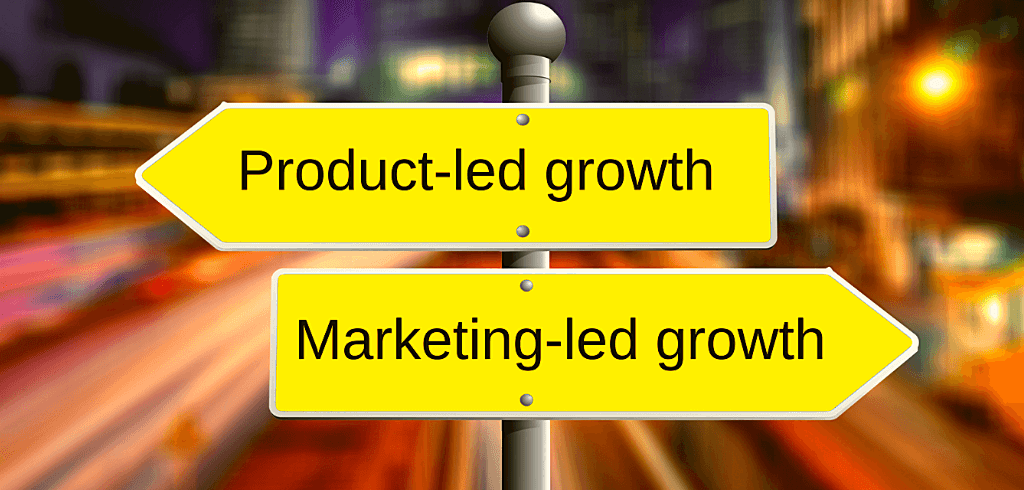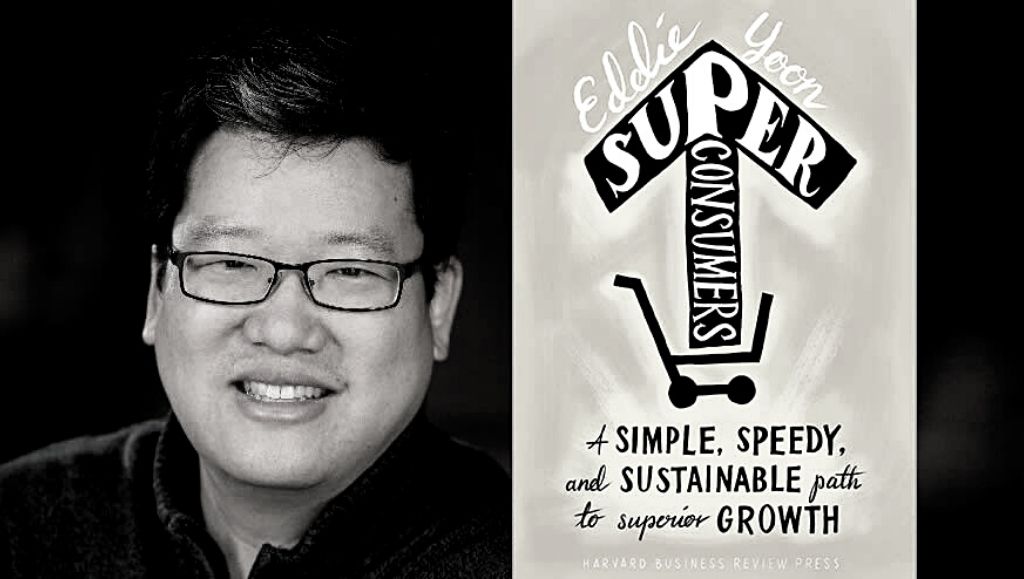If you apply the first principle thinking to all types of marketing in practice today, you can deduce all of them into the single category of growth marketing.
That’s because any marketing that doesn’t contribute to some growth isn’t marketing at all.
Therefore it doesn’t matter what name you give to your marketing specialization (e.g., branding, digital marketing, advertising, social media marketing, or content marketing) as long as it’s strategic, experimental, optimized for growth.
But “growth” is perhaps one of the most overused terms in the marketing circles because it’s also the most sought-after metric among businesses today.
That’s perhaps why there are about 5,050,000 people on LinkedIn who put “growth marketing” in their professional bios.
While it’s not sure if all of them practice growth marketing in spirit, the trend exemplifies that—in the marketing world, all roads lead to growth.
Most early-stage startup founders and CEOs also hire growth marketers as one of their first employees much before hiring a VP of Sales or Marketing. While they can’t afford to rope in a C-suite person initially, they initially need growth to build momentum from day one.
Growth is an elusive concept in businesses because you can’t flip open a marketing playbook and summon the growth genie out of thin air.
To grow your business in the right direction, you first need to weigh all the growth possibilities you can take to attract the right customers to your business, keep them loyal, and repeat the cycle forever.
Four major growth strategies can help you achieve the above goals:
- Sales-led growth
- Product-led growth
- Founder-led growth
- Marketing-led growth
What’s best for your business? What are the benefits and challenges that they come with?
Before I get into the weeds and discuss each of them in detail, I want to clarify something off the bat.
The definition of growth can be subjective because it might mean growth in revenue, the number of users, valuation, or whatever is essential for your organization.
I think that growth in terms of revenue or profit is the best kind of growth metric to go after because if you can achieve profitable revenue, you can achieve all other types of growth in the process as well.
So let me begin with the first kind of growth avenue that maps directly to revenue and the one we all are familiar with.
Sales-led growth
Sales-led is the growth strategy where your sales processes and teams take the driver’s seat to grow your revenue.
In the sales-led growth environment, your company’s success directly depends on how well the sales team performs.
The marketing team might still set the brand narrative—such as through branding or running high-impact campaigns—but it’s always the sales teams who have more significant control and impact on the organization’s bottom line.
Companies like Salesforce and Microsoft are two companies who have expanded their area of influence by flexing their sales muscles since their early days of growth.
The only problem I see with sales-led growth is that it can lead to business silos. Sales-led growth doesn’t factor other aspects of business growth like customer service or customer success into account—which is a big let-down.
Here’s an example of what I mean: In a typical sales-led scenario, the marketing team gathers leads, passes them onto the sales development representatives who then qualify the leads and pass them onto the account executives.
If one of the teams isn’t functioning in sync, the whole process falters—the quality of leads goes down, your funnel starts leaking, or your deal closing rate starts to suffer.
The sales process can be fragmented across the funnel because there are several moving parts in the process. Therefore, you need a very tight alignment between sales and other teams involved in the sales process.
In the context of sales-led growth organizations, it’s difficult for them to get the sales, marketing, and customer support teams to align on the same mission of selling something to the world.
That’s because when you have the human element involved in a process, you are bound to have ego wars, tempers flaring, and psychological mind games.
Here’s another example of another silo that is common among sales-led growth organizations.
Salespeople are at times known to over-promise or over-commit certain aspects to their prospective clients to get a deal across the line—without consulting the product, marketing, or the customer support team.
But the customer success teams aren’t always aware of these agreements, so they aren’t able to live up to the promise. Eventually, the customer retention takes a beating later in the process.
To sum it up—the sales processes in a sales-led organization are often very nuanced, complicated, and subject to the whims and fancies of the people and teams involved.
Sales-led growth is perhaps the best strategy for service-based companies—companies that sell highly technical or proprietary products—or even consulting firms that tend to be high-touch business interactions.
Sales-led growth is most common within B2B domains since sales-driven organizations naturally have longer buying cycles.
Sales-led growth is excellent if you can have everyone on the same page and get them to collaborate like a single team.
Product-led growth
There’s no prize for guessing—product-led growth (PLG) strategy is driven by the product. PLG is also one of the more popular growth strategies in current times.
SaaS companies of all shapes and sizes extensively follow PLG as their growth model.
In PLG, the idea is to build a fantastic product, offer world-class user experience, and add a viral loop to your product.
For example, think of products like Slack, Netflix, Zoom who offer outstanding product experience. On the other hand, their marketing or sales is almost non-existent.
The more you think about it, the more you see great examples of brands that leverage PLG to grow their user base. A host of collaboration and communication tools like Google apps, Calendly, and Typeform have grown exponentially because of the viral quotient embedded in their products.
When your entry point as a customer is the product itself, it means these companies have a lower customer acquisition cost (CAC).
Take Zoom as an example. When you send out a Zoom invite to someone, the recipient is forced to experience the product even though they might not be an existing user.
The same thing applies to Slack. If you want to be a part of some online community, you will most likely get a Slack invite to join them. And boom—the virality kicks in and takes care of the user acquisition from there.
Sometimes PLG fans go a little overboard and say that the product sells itself. But I think that’s debatable because while the product can be a growth lever in itself, it still needs some initial leg-up from the marketing (or sales) to be discoverable.
For example, PLG can’t drive all the traction without a little push from marketing in helping you discover your product-marketing fit. What PLG does best is—it scales your growth from that point on.
Once the viral coefficient comes into play, you don’t need marketing or sales to distribute the product. Because the process is naturally so well-knit and automated, there’s no question about sales and marketing misalignment.
PLG also shortens your sales cycles, and automates your user acquisition, activation, onboarding for the most part.
A well-applied PLG also takes care of customer success and customer support to an extent. Think of automated paid upgrades, auto-renewals, and answer bots as examples.
PLG can be suitable for both B2C and B2B—although B2B companies seem to be leveraging it best for their growth.
The main takeaway here is that—PLG is an excellent strategy to go after if you are a product-based company and don’t want to depend on marketing or sales to distribute your product to your customers.
Founder-led growth
Founder-led growth is a relatively lesser-known growth strategy compared to SLG or PLG because there aren’t many instances of people doing it except for rare geniuses like Steve Jobs or Elon Musk.
That’s also the reason why this type of growth is too hard to replicate—unless you are Richard Branson, Mark Cuban, or Gary Vee of your small business universe.
Founder-led growth takes place when your company’s or product’s success is driven by the brand or popularity of your company’s founder, CEO, or whoever is the face of that business.
Steve Jobs is perhaps the best example of the kind of founder-led growth we are talking about because he single-handedly grew Apple to the decacorn that it was when he was still around.
For instance, Jobs made every Apple Keynote event look like launching a rocket into space. He made each of those events a ceremony which helped the sales of iPads and iPhones go off the charts.
And it didn’t matter if Microsoft had released a tablet precisely like the iPad 10 years before Apple did. The iPad had to be great because Jobs launched it.
Jobs also single-handedly revived Apple from the ruins years after being fired from the company he founded. His goodwill among the masses (and other stakeholders) helped him restore people’s trust in Apple after his comeback.
Come to think of it, Elon Musk is doing pretty much the same thing right now with Tesla cars, Cybertruck, and other Tesla products.
I mean, all he does is tweet a photo of the cybertruck on Twitter and the bookings for the weird-looking vehicles go through the roof.
Nobody *expects* the Cybertruck pic.twitter.com/khhYNFaVKs
— Elon Musk (@elonmusk) November 22, 2019
And I think that’s crazy—not many people can do that!
One of the reasons founder-led growth is effective is because of the personal branding around the founders.
For instance, the brand they build around themselves also impacts the investment they can attract, their company’s valuation, etc.—all of which lead to a virtuous cycle.
So while founder-led growth might not make sense for most of us, it teaches a vital lesson about the value of personal branding.
The lesson is that—if you already have an influence or have built an audience in your niche, chances are you can extrapolate some of that success to the business that you are growing.
Marketing-led growth
As the name suggests, it’s the growth driven by marketing. It’s somewhat similar to the sales-led growth model I spoke about earlier.
For example, if people are signing up for your product after consuming content from your blogs, ebooks, videos—then you probably have a marketing-led growth strategy.
In today’s time, where every domain is crowded with ten other lookalike products, being marketing-led means you can establish a narrative to differentiate your brand from others.
Brands like Drift, Hubspot, and Ahrefs are some of the best examples of companies that have leveraged marketing-led growth to grow their business.
Let’s dissect Ahrefs to understand this better. Although many people might put Ahrefs under the product-led bracket, I think it’s as much marketing-led as it is product-led.
For example, if you look at their user acquisition strategy, the first thing you will notice is that they don’t even offer a free trial—unlike the majority of SaaS brands that it competes with.
For perspective, both SEMrush and Moz—Ahrefs’ closest competitors in the SEO software category—offer generous 30-day free trials and their paid plans start at $99 per month.
Ahrefs’ paid plans also start at $99 per month, and they offer pretty much the same set of features as that of these incumbents—minus the free trial. To experience Ahrefs for a 7-day period, you have to pay $7.
This is so ludicrous that it’s almost unheard of in the SaaS domain.
And yet, people happily sign up and buy Ahrefs. So why do people still prefer Ahrefs over other alternatives?
It’s because users who sign up with Ahrefs already know what to expect from the tool—thanks to Ahrefs’ genius marketing.
While Ahrefs doesn’t have a sales team, their marketing team does a fantastic job of creating blogs, videos, and courses that explains the benefits of using Ahrefs to their likely users.
Their marketing leaves no stone unturned to target the right keywords in their content and map them right back to their product and features—in a meaningful way.
And since their product experience is equally good, the virality aspect kicks in much later during automatic upgrades, referrals, social shares, etc.
There’s a common trap in marketing-led growth that many organizations fall into. Most marketing-led companies mistake marketing-qualified leads as potential buyers and go after them when somebody downloads an ebook or subscribes to a newsletter.
It’s important to remember that people don’t necessarily intend to buy your product if they interact with your marketing content.
You should share leads with your sales team only if you have nurtured them enough or have strong reasons to believe they are your likely customers.
For example, consider someone who has expressed interest in your product demo or has made extensive use of your free product trial, and now they want to talk to your sales team to get a good deal. Only such genuinely interested contacts should be passed on as sales-qualified leads.
Another common problem with marketing-leg growth is that it lionizes customer acquisition over customer retention. But it’s a problem that can be quickly addressed if your company’s leadership understands the value of customer retention as a sustainable business model.
The bottomline is—marketing-led as a growth model makes sense if you want to grow your branding or organic footprint in the market.
Which one will you choose?
There are a few other growth strategies that I didn’t talk about—like customer-led growth—which I think is inherently a part of all the growth marketing strategies that we discussed today.
The takeaway I want to leave you with today is—you have to pick the one that works best for you, based on the many variables in your organization or your niche.
Given the times that we live in right now, I think it makes sense to bet heavily on PLG more than other growth strategies because it’s time- and cost-effective and more customer-centric in comparison.


